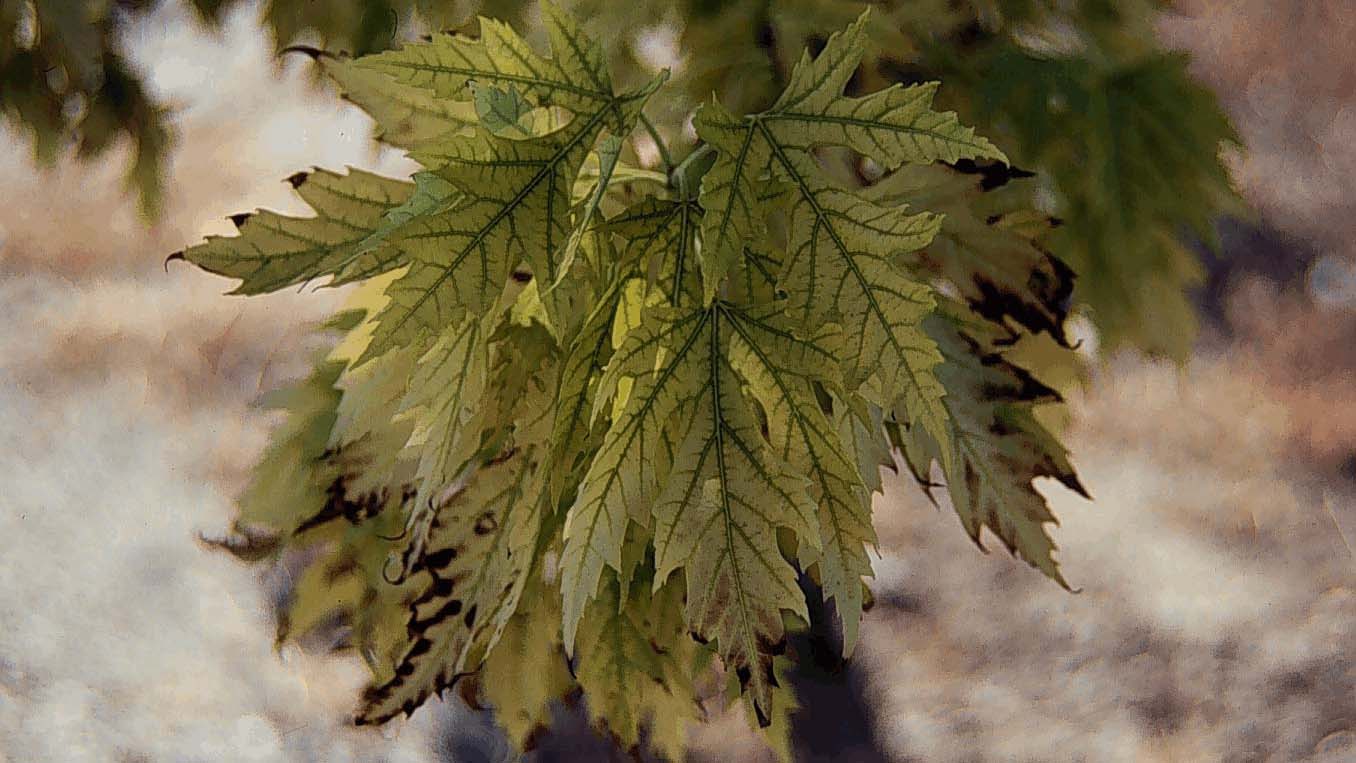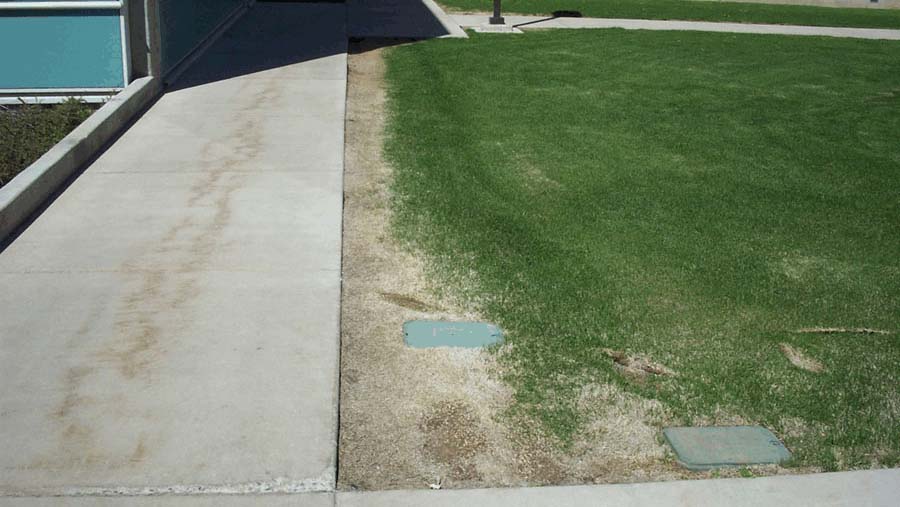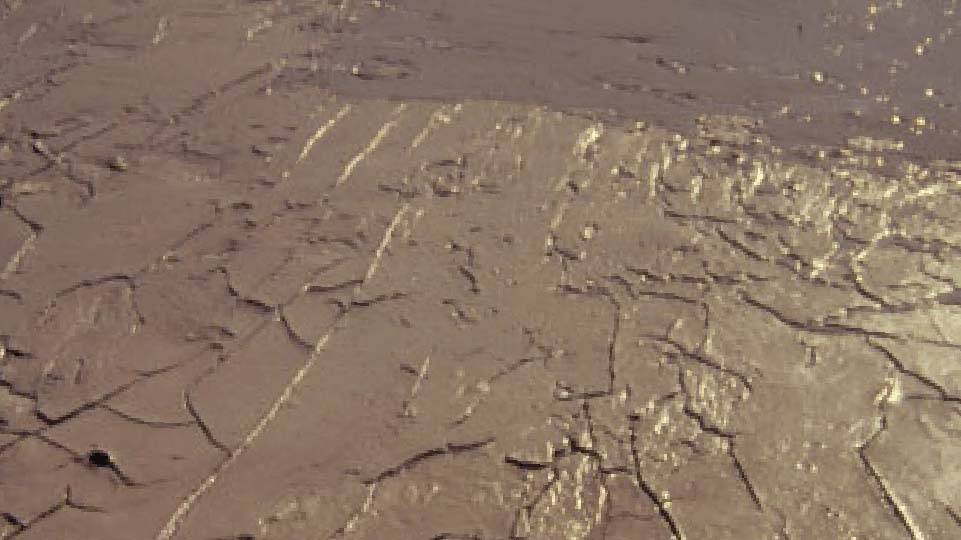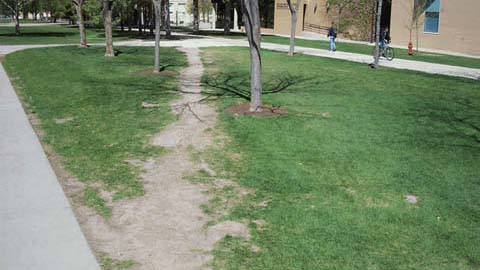Solutions to Soil Problems II. High pH

P H is a measure of the acidity or alkalinity of a material. The pH scale ranges from 0 to 14, with 7 being neutral. A pH value below 7 indicates the soil is acidic, while values above 7 are alkaline. Each unit change in the pH scale is a 10-fold difference in acidity or alkalinity. For example, soil with a pH of 8 is ten times more alkaline than soil with a pH of 7.
The majority of soils in Utah are alkaline with an average pH of 8.0. Alkaline soils in Utah are the product of the alkaline parent materials that formed them and thousands of years of development in an arid (low rainfall) environment.
A major problem in alkaline soils is reduced nutrient, and especially micronutrient, availability. Iron deficiency (iron chlorosis) is a very common problem throughout Utah and is the direct result of high pH soils reducing the availability of iron to plants. The most common symptom of iron deficiency is interveinal chlorosis, where leaves turn light green or yellow but leaf veins remain green.
Measuring Soil pH
A commercial testing laboratory can measure soil pH for a few dollars per sample. Contact a local county Extension office for information on collecting soil samples and sending them to a laboratory for analysis. Inexpensive soil pH test kits are also available at many home and garden stores. These kits work reasonably well for estimating soil pH.
Living with High pH Soils
A pH of 6.0 to 7.2 is optimal for the growth of most garden and landscape plants. However, soil pH in the range of 7 to 8 is adequate for many plants, especially those adapted to arid, Western U.S. environments. Living with a slightly alkaline soil (pH 7.0 to 8.0) is much easier and less expensive than trying to lower soil pH. Alkaline soils in the Western U.S. contain large amounts of naturally-occurring lime. This “free lime” buffers pH in the alkaline range and makes it extremely difficult to change soil pH. Irrigation waters in Utah are also alkaline and promote high soil pH.
Selecting plants that tolerate high soil pH conditions will insure success in plantings and few problems with iron or other nutrient deficiencies. Table 1 lists common garden plants and their optimal pH range.
Table 1. Soil pH adaptation of some common garden plants.a
| Neutral-alkaline (7.0 to 8.0) | Near neutral (6.5 to 7.5) | Neutral-acidic (6.0 to 7.0) | |||
|---|---|---|---|---|---|
|
|
|
|
|
|
For other listings of the tolerance of woody plants to high pH conditions see publication NR 460, Selecting and Planting Landscape Trees, and AG-SO-01, Control of Iron Chlorosis in Ornamental and Crop Plants. (Utah State University Extension web site: extension.usu.edu).
Lowering Soil pH
If soil pH is above 8.0, some action may be needed to reduce pH. After determining soil pH consider the following measures to lower the pH of highly alkaline soils:
- Amend the soil with organic matter. On average, soils with higher organic matter contents have lower pH. Peat or sphagnum peat moss are highly acidic and will lower soil pH more than other organic amendments.
- Add elemental sulfur (90 or 99% sulfur material) annually at a rate of 6 to 10 pounds per 1000 square feet of area. Elemental sulfur slowly oxidizes in soil to form sulfuric acid. Test the soil occasionally and stop adding sulfur when pH has reached desirable levels.!Plant on raised beds in a sandy medium amended with peat moss or another source of acidic organic matter. An alternative is to plant in boxes or ½ barrels heavily amended with acidic forms of organic matter.
- Use acidifying fertilizers such as ammonium sulfate and other products with label designations indicating an acidic reaction in the soil. With repeated use these materials may reduce soil pH.
- Plant on raised beds in a sandy medium amended with peat moss or another source of acidic organic matter. An alternative is to plant in boxes or 1/2 barrels heavily amened with acidic forms of organic matter.
Utah State University Extension
Peer-reviewed fact sheet
Download PDF
Authors
Loralie Cox, Cache County Horticulture Agent and Rich Koenig, Extension Soil Specialist
Related Research






